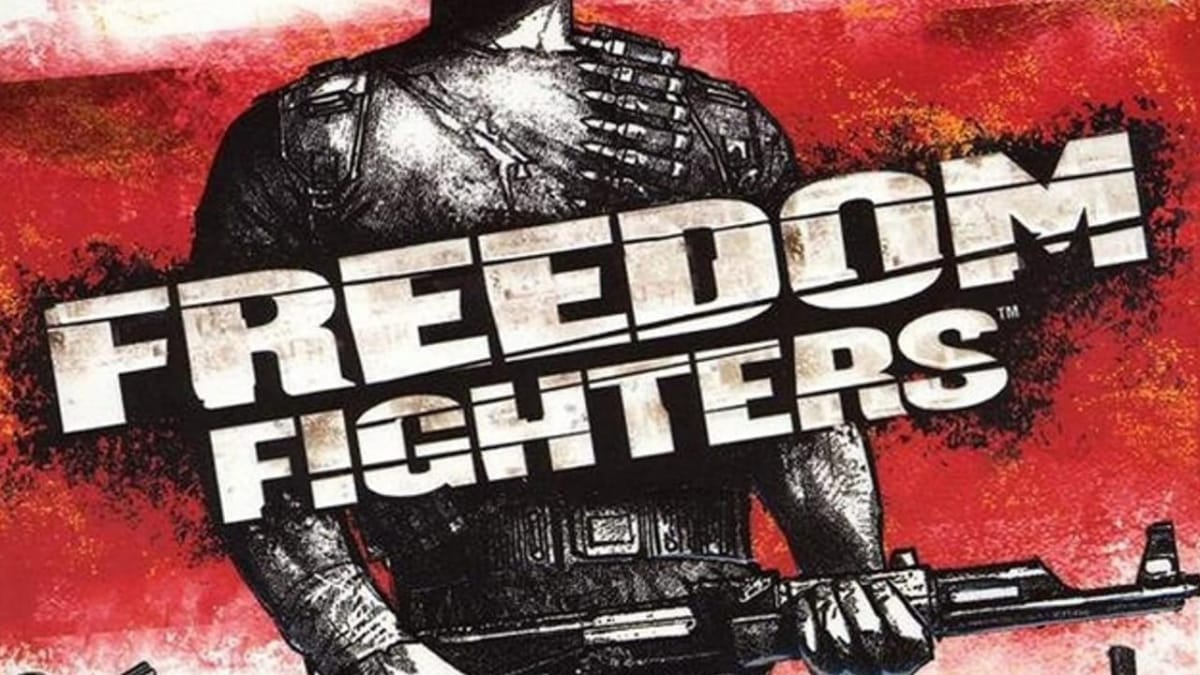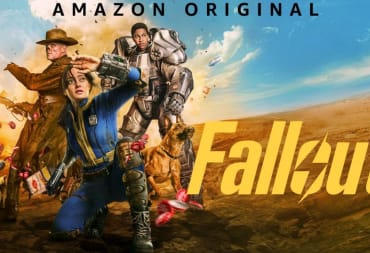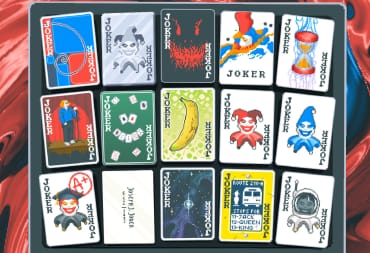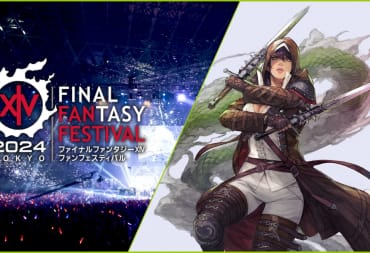Alternative history is often a fun way to create a new world with little effort, proposing a butterfly effect to historical events that in turn provide a new perspective of our world view as well. Media has always capitalized on these forms of fiction, and famous “what if?” scenarios are a hallmark of both serious and pulpy forms of entertainment. Video games, of course, have their own brand of alternative history to go through, from the Wolfensteins to the Resistances of the world. One game in particular, the 2003 title Freedom Fighters, was a small but forgotten gem that embraces its own tropes to deliver a satisfying gameplay experience.
Developed by IO-Interactive and published by EA, Freedom Fighters was the first new IP from IO back in the day outside of their famous Hitman series. Freedom Fighters invokes a different tune than their titular stealth-assassin games, instead going for a Red Dawn style of pulp action as a rebel named Chris leads squads of civilians against a well-oiled Russian machine.
Russians being the stereotypical villain is an old hat cliché, but it is one that works in this scenario, and from time to time we see the “invading force in the U.S.A” storyline done in video games. The Call of Duty and Homefront series in particular are noteworthy as more modern examples.
Here, it plays out to the logical conclusion. Freedom Fighters is not original in its storytelling at all, with the plucky survivors of the initial invading Russian forces organizing an armed terrorist resistance against Russia in New York. You use sewers to access different locations on a map, you steal supplies to blow up helipads and strategic locations, you rescue POWs and capture major strongholds, all in a long effort to cause chaos and destruction against the Soviets in Manhattan.
All of these actions are basically what you would expect, right down to the clichéd missions where you assassinate high ranking officials or storm a TV station to broadcast a message to the people. The final level of the game is an all or nothing raid on Governor's Island, with a massive assault force fighting back a well-fortified Russian castle. The Wolverines would be proud of the exploits of the New York resistance fighting back the Communist menace, and it is a well-earned victory against all odds.
What helps separate Freedom Fighters from other games in this vein is the tactical system IO created, coupled with the knockout level design. Players can recruit an increasing number of rebels on their missions, and with three basic commands of “attack,” “defend,” and “follow,” they are able to use their followers strategically to capture or hold checkpoints, raid Russian strongholds, or simply defend strategic locations through the game maps.
The A.I on the rebel fighters is well-done - not as dynamic by modern day standards, but for a game in 2003 it was unparalleled, automatically holding off choke points without the assistance of the player. Enemy A.I is a bit dodgier, but the sheer numbers and pincer tactics the Russian forces use on the player make for deadly firefights if the player is not careful.
The second winning design element in Freedom Fighters is the levels themselves. While the basic facsimile of sprawling New York streets, there are enough twists and turns, alleyways and building crawls to make each level a digital playground to explore in. Stealthily moving behind a Soviet checkpoint or tackling them head-on with superior numbers is the choices the player has to make, and the world rewards those choices with a sense of accomplishment and immersion. There are no cinematic scenes or knockout moments we typically see in modern shooters; all production values and resources are grounded and personal, over dramatic and forced.
It also allows for a non-linear mission structure. Typically, two to three maps will be available per level to travel through freely (via the sewer network), so players can mix and match objectives as they see fit. Need to capture a fuel depot but an attack helicopter is guarding it? Go sabotage the heliport first then come back later. Need extra soldiers for a particularly tough raid? Find a POW camp to hopefully increase your recruitment powers in the process. The game allows the player to make choices, with each level becoming a puzzle box arena to solve their way.
Only one other game has really captured this idea, the recently released Homefront: The Revolution, where your war against an occupying North Korean army is a block by block urban battle that contains similar mission objectives, only with a more open city to explore.
Freedom Fighters has this same rhythmic ebb and flow; you slowly and surely conquer street corners and checkpoints until you have enough of an edge to take over the level's specific stronghold. It offers a degree of realism in an otherwise unrealistic world; armed rebellion against an invading force would be small squad, hit and run terror tactics, crippling supplies and causing overall mayhem to cajole the rest of the population to fight as hard as possible.
There are also a lot of good points to Freedom Fighters that often get overlooked. While most of the characters are one-dimensional and excruciatingly annoying, some of the hammy performances play up the pulp-action feel of the events around you. Between each level, for example, are fake newscasts by the saccharine sweet Tatiana Kempinski, a Soviet-party news Anchor who purposely lies and misleads the public to showcase the Soviet propaganda machine.
It is dialed to 11 in terms of Red Dawn clichés, right down to the subdued, almost glowing interviews with major Russian officials and her quick dismissal of rebellious forces, utter phrases “who will be dealt with swifty” in her laughably faux Russian accent.
These breaks in the action highlight the ridiculousness of the alternative history Freedom Fighters presents and are only exacerbated as time goes on in the game. At the same time, other vignettes attempt to depict the fight as a serious note - the clichéd, jingoistic, “America is free” speech we expect from Chris towards the game's end is played straight despite it being as unrealistic as the rest of the game. The speech ultimately serves as the final check on the list of full-born tropes to follow in the games pulp-action world, Chris needs to make that speech because he needs to energize the fight for the game's climax.
There is a sort of charm to the whole idea of Freedom Fighters. Other games with similar themes tend to play it too straight, forcing the player to see almost cartoonish depictions of evil while often relentlessly holding their hand through the entire experience. The first Homefront game was particularly egregious of this sin, becoming set piece after set piece of forced, apathetic “war being necessary” styled gameplay, even when it went against its own design or common sense for how some events can even occur.
Freedom Fighters instead ignores the subtext of the invasion and the personal politics surrounding why they fight, falling back on the pulp “Freedom” tropes as the only motivating factor. It produces action and entertainment, and that’s all you need sometimes to be a compelling game.
Perhaps this is why other series struggle so much when telling the same story, but Freedom Fighters offers a digital sandbox to play war in over worrying about the real-life consequences of your actions. The subtext is there, and hinted at by both sides but ultimately is a non-factor to why you fight. Committing acts of terror against terrible people is justified in the name of freedom, right?
Freedom Fighters as a game is fantastic on every level this way. The fun of the game and its inner mechanics take precedent over thought-provoking yearnings of the cost and casualty of war. Any time the game tries to take itself seriously, it feels forced at best and brings down the experience, but Freedom Fighters is ultimately a game that is not reliant on its storytelling chops to play through it. It relies rather on its inner mechanics to provide a fun, if relatively short, experience for the player.
IO-Interactive has talked about reviving the series as late as 2011, but no official plans have yet been made for a sequel. Who knows what direction Freedom Fighters can go into though anyway; the game itself is basically the Red Dawn experience, neatly tied up in the game's roughly 15-hour length. Hopefully though it retains its legacy as a game—the stunning AI and arena-style battles that made it a hidden gem in the first place—if it does come back for a sequel.
This post was originally published in 2016 as a part of our Gaming Obscura series. It's been republished to have better formatting.
Have a tip, or want to point out something we missed? Leave a Comment or e-mail us at tips@techraptor.net













